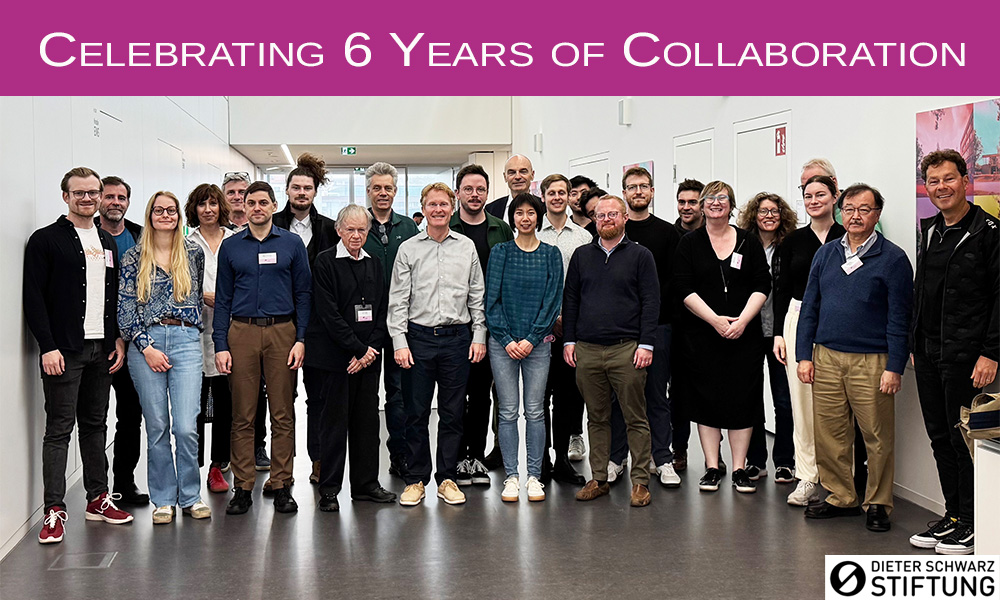Science Across Continents: Celebrating Collaboration and Discovery

Celebrating six years of global collaboration, the Life Science Alliance gathered in Heilbronn for a vibrant meeting of science, innovation, and partnership across continents.
In March, members of the Life Science Alliance Network convened at the Bildungscampus Heilbronn to celebrate six years of collaboration between EMBL and Stanford University. The event brought together postdoctoral fellows, recipients of LSA seed funds and exchange grants, as well as host labs from both institutions, fostering vibrant scientific exchange and collaboration. Local partners from Heilbronn — including the MOLIT Institute, the Max Planck Institute for Medical Research, and the Duale Hochschule Baden-Württemberg (DHBW) — also joined, further strengthening ties within the regional scientific community.
Lars Steinmetz, Director of the Life Science Alliance, opened the meeting by welcoming participants to Heilbronn and inviting everyone to celebrate six years of collaborative success. He thanked the Dieter Schwarz Foundation for their generous support, which brought the alliance to life.
Reflecting on his own two decades of research experience across EMBL and Stanford, Steinmetz emphasized, “We bring together outstanding people, excellent research infrastructure, and a diversity of approaches to achieve so much more than we would if working alone.” He recounted the Alliance’s growth since its founding: “We started small, grew bigger, and now have a network with 92 labs on both sides.” What began with ten self-funded projects has expanded into 39 collaborations within the network, many of which were sparked by principal investigators coming together to brainstorm project ideas for postdoc fellowships. Steinmetz highlighted the pillar of the Alliance – its postdoctoral fellowship program through which it has been possible to award 11 fellowships. He reminded the audience that “the most important biomedical challenges are global and are being worked on across continents, underscoring the significance of the Life Science Alliance in fostering international solutions.”
Stefan Bassler, a fellow at Stanford, also praised the meeting’s atmosphere: “The inspiring setting at the Bildungscampus, with its modern facilities, fostered lively discussions and seamless networking. I’m thrilled to be part of the Life Science Alliance, which unites an international group of ambitious scientists dedicated to making a difference. By promoting collaboration between EMBL and Stanford, the Life Science Alliance creates vital opportunities for intercontinental partnerships, especially in increasingly divided times.”
Over two days, cutting-edge research was presented across diverse fields — from structural biology and enzyme dynamics to evolutionary biology, single-cell omics, genomic plasticity, and machine learning tools for biology. The meeting also delved into fundamental questions of cellular organization and development. New advances in synthetic biology and personalized health were also featured, and participants took a break from scientific exchange with a special visit to the Experimenta, Germany’s largest science center.
Max Wranik, a postdoctoral fellow at Stanford University, particularly enjoyed the diversity of topics presented from the network: “It was great—I’m really glad I decided to take the long trip. I liked the format; the short talks ensured we got a broad overview of different fields and people… It truly provided a platform to interact with a wide variety of people in a very personal setting, something you usually don’t experience at large conferences or in our everyday work lives.”
The gathering was a vibrant celebration of innovation, interdisciplinary collaboration, and impactful science made possible through the Life Science Alliance — with even greater discoveries yet to come.